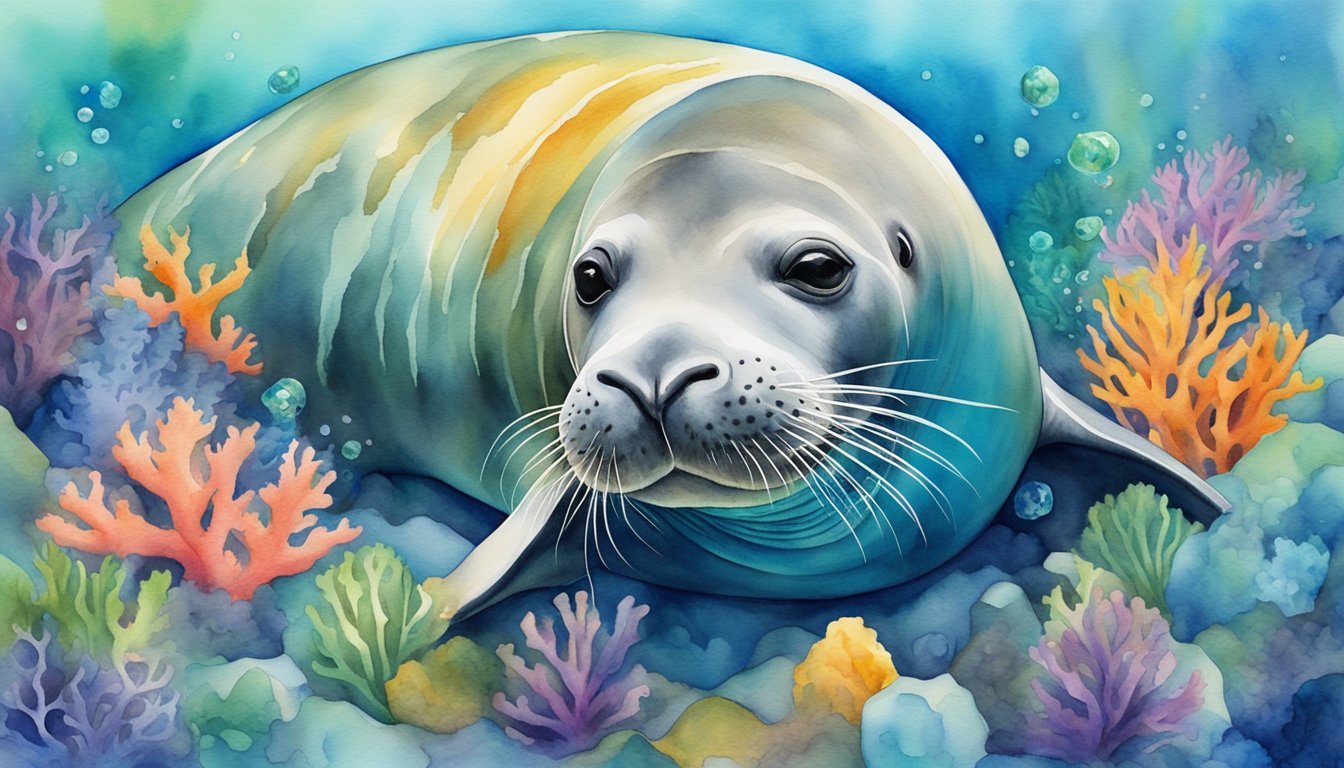Monk Seal Basics

Monk seals are a fascinating group of marine mammals known for their endearing appearance and the conservation challenges they face. These seals belong to the genus Neomonachus and the family Phocidae, a group distinct from other seals due to their earless nature.
Species Overview
Monk seals encompass three species: the Hawaiian monk seal (Neomonachus schauinslandi), the Mediterranean monk seal (Monachus monachus), and the Caribbean monk seal (Neomonachus tropicalis), which became extinct in the 20th century. Monk seals are considered one of the most endangered groups of seals on the planet, with the Hawaiian species particularly acknowledged for their conservation needs as only one-third of their historical population numbers remain.
Physical Characteristics
The adult Hawaiian monk seal is an impressive marine mammal, reaching lengths of 6-7 feet and weights of 400-600 pounds with a lifespan of about 25-30 years. They are characterized by their grey, brown, or black coats, and display a unique trait of molting—shedding the top layer of their skin and fur once a year.
Habitat and Distribution
Monk seals are naturally found in warm climates, with the two extant species living in distinct areas. The Hawaiian monk seals are endemic to the Northwestern Hawaiian Islands, though they are occasionally seen in the main Hawaiian Islands. They are typically found foraging in waters 60-300 feet deep and resting on sandy and rocky shorelines. Mediterranean monk seals, on the other hand, are distributed along the coasts of the Mediterranean Sea, predominantly within marine protected areas due to their critically endangered status.
Conservation and Threats
The Hawaiian Monk Seal is an endangered species grappling with numerous threats, while conservation efforts are underway to safeguard its future.
Diet and Foraging
The Hawaiian Monk Seal primarily feasts on a variety of marine life, including fish, crustaceans, and cephalopods. They are skilled foragers that can dive deep into the ocean to hunt for benthic, or bottom-dwelling, creatures like lobsters, eels, and octopuses.
Reproduction and Lifecycle
Reproduction for the Hawaiian Monk Seal occurs throughout the year, with peak seasons varying by location. Life begins as a pup, and the first six weeks are spent nursing, followed by a period when they are weaned. Over several years, pups mature into adults capable of reproducing, contributing to the population’s growth.
Human Impact and Protection Measures
Human interactions pose numerous challenges for monk seals, including entanglement in fishing gear and marine debris. Protections under the Marine Mammal Protection Act and the Endangered Species Act have helped, but shark predation from species like Galapagos sharks, and human disturbance continue to threaten their existence. To protect these seals, NOAA Fisheries has been at the forefront of conservation efforts, emphasizing the need for mitigation of human-induced hazards and promoting coexistence.

